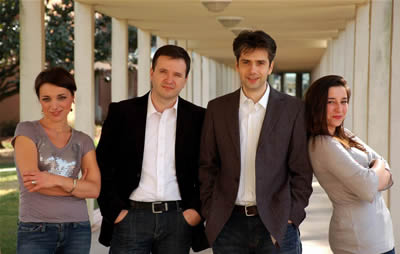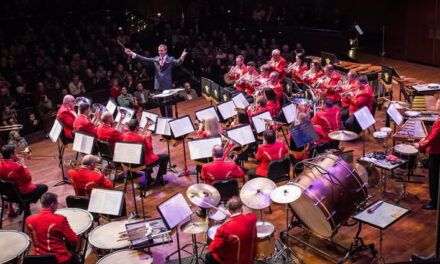Performances by the student orchestras of our state’s major universities are extraordinary musical bargains for music lovers in these tight budget times. Those of conservatory level often have a high degree of polish and all bring the excitement of first discoveries of the repertoire by un-jaded players. Since I began reviewing for CVNC in 2001, I have had the frequent pleasure of covering the continued artistic growth of the student orchestras of UNC at Chapel Hill, UNC at Greensboro, UNC School of the Arts, Duke University, and Elon University. This concert by the East Carolina University Symphony Orchestra, a division of the School of Music, was the first time I have been able to hear their full ensemble, having only heard smaller forces as pit orchestras for operas.
The concert opened with two short chestnuts, the Hungarian Dance No. 5 in G minor and Hungarian Dance No. 6 in D by Johannes Brahms (1833-97) arranged for orchestra by Martin Schmeling. The set of 21 lively dances based on mostly Hungarian themes was completed in 1869 and was among the composer’s most profitable works. Originally composed for performance by 4-hands piano, Brahms later arranged the first 10 for solo piano and he only orchestrated Nos. 1, 3, and 10..
The Brahms Hungarian Dance selections were conducted by Lucas Maia in partial fulfillment of the requirements for the M.M. Degree in Orchestral Conducting. Maia led an alert and solid performance with a clear beat and careful attention to balance and dynamics. All sections of the orchestra responded with precise sectional ensemble and readily reacted to the many sudden shifts of rhythm or loudness.
The cello Concerto in B minor, Op. 104 by Antonin Dvořák (1841-1904) was completed in 1892 and was the last work completed during his three-year stint in the United States. It is in three movements. The strongly rhythmic principal subject in the first movement dominates the work’s fiery orchestral introduction. The cello enters playing the nostalgic and yearning second theme. The composer makes use of such things as contrasting the solo cello in the distant key of A-flat minor against shimmering tremolos in the violins and violas. The gorgeous “Adagio ma non troppo” abounds in deeply touching melodies. Dvořák honors the memory of his sister-in-law by having the cello sing an adaptation of her favorite song of his, “Kezduch muj sam” (“Leave Me Alone”). The Finale is dominated by rousing folkdance-like rhythms. The concerto reaches the key of B-flat in the middle when the cello pairs with the first violins in a duet of extraordinary tenderness. Before the last movement ends, the first movement’s opening theme is recalled, followed by a remembrance of the slow movement’s song, which leads to an allusion to the Finale’s principal theme capped by a brilliant crescendo for the full orchestra.
The cello soloist was Cameron Collins, winner of the 2012-13 ECU School of Music Concerto Competition. Collins produced a fine, warm tone and displayed excellent intonation. He played with confidence (without score) and conveyed plenty of conviction for his mainstream interpretation of one of the two pillars of the cello repertoire. His brief quiet duet with the concertmaster in the finale showed a chamber music-like care of attention to detail. Conductor Jorge Richter led his well-prepared and alert musicians in an accompaniment that fitted around the solo cellist like a glove. The string sections were beautifully together no matter the dynamic or tempo. The important horn solos, presumably by principal Alex Williams, were excellent as were all the many important woodwind solos. This was a richly rewarding performance by all involved.
Jorge Richter and his imperturbable student musicians took no prisoners in an inexorable interpretation of the ever popular Symphony No. 5 in E minor by Peter Ilyich Tchaikovsky. This work has been so often programmed throughout the state that it is easy to become jaded toward the old chestnut. Richter led a dynamic and passionate performance that swept up the listener and never let go. Balance was excellent and articulation in the fastest passages was clear and crisp. The important horn solo in the second movement was great. The third movement really danced and Richter was able to conjure up a dark, rich despairing sound in the last movement’s opening despite only three double basses and six players each in the cellos and violas. Wow, what a ride!
There was a good turnout in Wright Auditorium. Music lovers got quite a bargain since this concert had free admission but would have been worth even more than some universities have begun to charge. It was a pleasure to hear another talented member of the Collins family. Cameron’s older sister Stefani, a violinist, is completing a Masters in Music from the Juilliard School and has already racked up impressive awards and important solo appearances. It has been rewarding to have watched the artistic growth of both since they were 12 years old. Cameron is a student of the distinguished cellist Emanuel Gruber.












